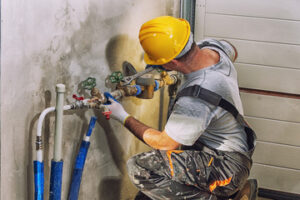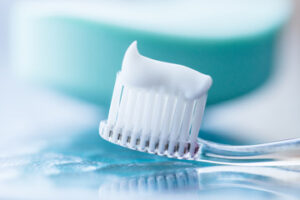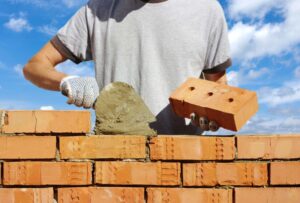Including photos in your local map listing is an effective way to capture attention, build trust, and drive immediate actions like website visits and phone calls.

Optimizing your business’s Google Business Profile (GBP) and encouraging customer reviews is essential to boosting your visibility in the local map pack. Contact Rank Boss for professional help.
Ranking in the Map Pack requires a variety of strategies that start with GBP optimization and include keyword optimization, positive customer reviews, and other best practices.
When potential customers search for local services or products, they want reassurance that the businesses they choose will be the right fit. Detailed, quality images of interior and exterior views give them a glimpse of what they can expect from your business, making it easier to build trust. Whether they are looking for a restaurant, retail store, or service-based company, engaging visuals on a Google Maps listing allow them to form a mental image before their first visit.
Local maps listings are an important part of any local SEO strategy. They provide essential information about a business, including contact information, address, hours of operation, website link, and customer reviews. By providing a high-quality, complete listing, your business can attract more customers and boost its local SEO rankings.
A well-optimized map listing will be displayed in the Google Map Pack, a trio of local business listings that appear in the top results of a local search. Businesses that rank highly in the Map Pack receive more direct engagement from potential customers, such as phone calls or visits to their websites.
Google takes many factors into account when determining which businesses to display in the Map Pack. This includes how well a business’s Google Business Profile is optimized, the number and quality of positive customer reviews, and the website’s overall optimization. Additionally, Google will consider how often a business updates their Google My Business page and the quality of their photos.
Optimizing for the Map Pack requires a combination of strategies, most notably, optimizing a Google Business Profile and using local SEO techniques to improve its ranking in organic searches. Our digital marketing team is experienced in utilizing various strategies to ensure that your business gets listed in the Map Pack and attracts more local and online traffic. Contact Kia Ora Digital today to learn more about how we can help you achieve your marketing goals.
Boosts Google Maps rankings
Boosting Google Maps rankings is an essential strategy for local businesses to gain visibility in their area. By optimizing their Google My Business (GMB) profile and implementing local SEO strategies, businesses can improve their chances of appearing in the “Google Map Pack” when users search for specific products or services.
The Google Map Pack is a group of three or more local results that appear on the top of Google’s search engine result pages. These listings display a business’s contact information, a link to its website, and other relevant details. Having a strong GMB profile and effective local SEO strategies can help your business appear in the Google Map Pack and attract more customers.
One of the most important factors for a local business’s Google Maps ranking is proximity to the searcher’s location. However, this isn’t the only factor that determines rankings. Other factors include the relevance of the business to the searcher’s needs, its prominence in the local community, and its customer reviews.
In addition to optimizing their GMB profiles, local businesses can boost their Maps rankings by incorporating visual content, such as photos and videos. These content elements capture attention, build trust, and drive immediate actions like website visits and phone calls. By including high-quality, regularly updated visual content, businesses can strengthen their online presence and thrive in a competitive marketplace.
Footprint Digital understands the complexities of local SEO and can provide expert guidance for your Google Maps strategy. Our team of experts will work with you to optimize your Google My Business profile and implement other local SEO strategies to increase your Maps rankings.
We will ensure that your GMB profile is fully optimized with accurate and comprehensive information, and that your NAP (name, address, phone number) is consistent across the web. We will also encourage positive customer reviews and respond to negative reviews promptly to help your business establish credibility and trust in its community. In addition, we will optimize your website and create landing pages for each of the areas you serve. This will help your business rank for each service area in the Google Maps pack and improve its overall SEO performance.
Increases website traffic
If you’re trying to reach a local audience, it’s essential that your online presence is visible to potential customers. This includes not only your website, but also third-party digital properties like Google listings and Facebook. Search engines like Google reference information across these third-party websites when deciding where to showcase your business in local search results. This is why it’s important to maintain consistency with your brand’s information, including name, address, phone number, and visual content.
Having an engaging map listing with high-quality visuals encourages customers to take immediate action, such as visiting your website or calling you directly. Depending on the nature of your business, customers may not even need to visit your website, which can simplify their buying process and boost conversions.
Optimizing your Google Maps listing with accurate and timely information can significantly improve your search rankings and attract more customers. It can also help you gain visibility in the local Map Pack, a prominent section of Google local search results that displays three business locations with their contact information and reviews.
Whether they’re looking for a new restaurant, hair salon, or dry cleaner, local customers want to be able to find the right place for their needs. If they’re unable to see accurate details about your location, they’ll choose a competitor that is more easily located and offers more comprehensive information.
Inaccurate or incomplete Google Maps listings can also cause confusion for potential customers. This is particularly true for large enterprises that operate multiple physical locations. Without a well-optimized local map listing, these customers can be overwhelmed by competing listings in the search results and may get lost.
If you’re not ranking in the Map Pack, it’s likely because your Google Maps listing isn’t optimized. By incorporating relevant and quality photos, your Google Maps listing will improve its chances of showing up in the top search results. This will help you generate more traffic to your website, phone calls, and other offline activities. In addition, it will enhance the user experience by giving searchers all of the information they need to make an informed decision.
Encourages customer reviews
A local map listing is an online profile of your business that contains important details like name, address, phone number and website. It also includes reviews and ratings from previous customers which help to influence buying decisions. Using this information, search engines display your business to potential clients when they search for services or products in your area. This increases your visibility and brand awareness which can lead to more foot traffic and web traffic.
A robust base of positive customer reviews is crucial for boosting local map listing optimization. These endorsements provide social proof and build trust with prospective clients, thereby fostering loyalty and improving search engine rankings. Reviews are especially effective when they mention specific products or services. Reviews that use keywords related to your business are more likely to be included in searches relating to those products or services.
Moreover, Google places a high importance on reviews and star rating when determining the placement of local businesses in the “local pack,” which is a section of search engine results that displays top results for a given query. Businesses that feature in the local pack are 2.7X more likely to attract clicks than those that do not. Additionally, businesses with higher star ratings tend to have a lower bounce rate, which can positively impact their ranking.
Encourage satisfied customers to leave reviews on your Google Business profile by offering incentives such as discounts or loyalty points. Be sure to follow review platform guidelines, however, to avoid violating their policies or misleading consumers. Additionally, make sure to actively monitor your feedback and respond promptly to both positive and negative reviews.
We can ensure that your local map listing is optimized for maximum impact on your target audience. We will incorporate the right keywords into your listing and optimize photo descriptions, alt text, and filenames to improve your ranking. In addition, we will add in-depth customer testimonials that will give your website an authentic voice. We will also promote your local map listing on social media to draw attention and increase its credibility.



